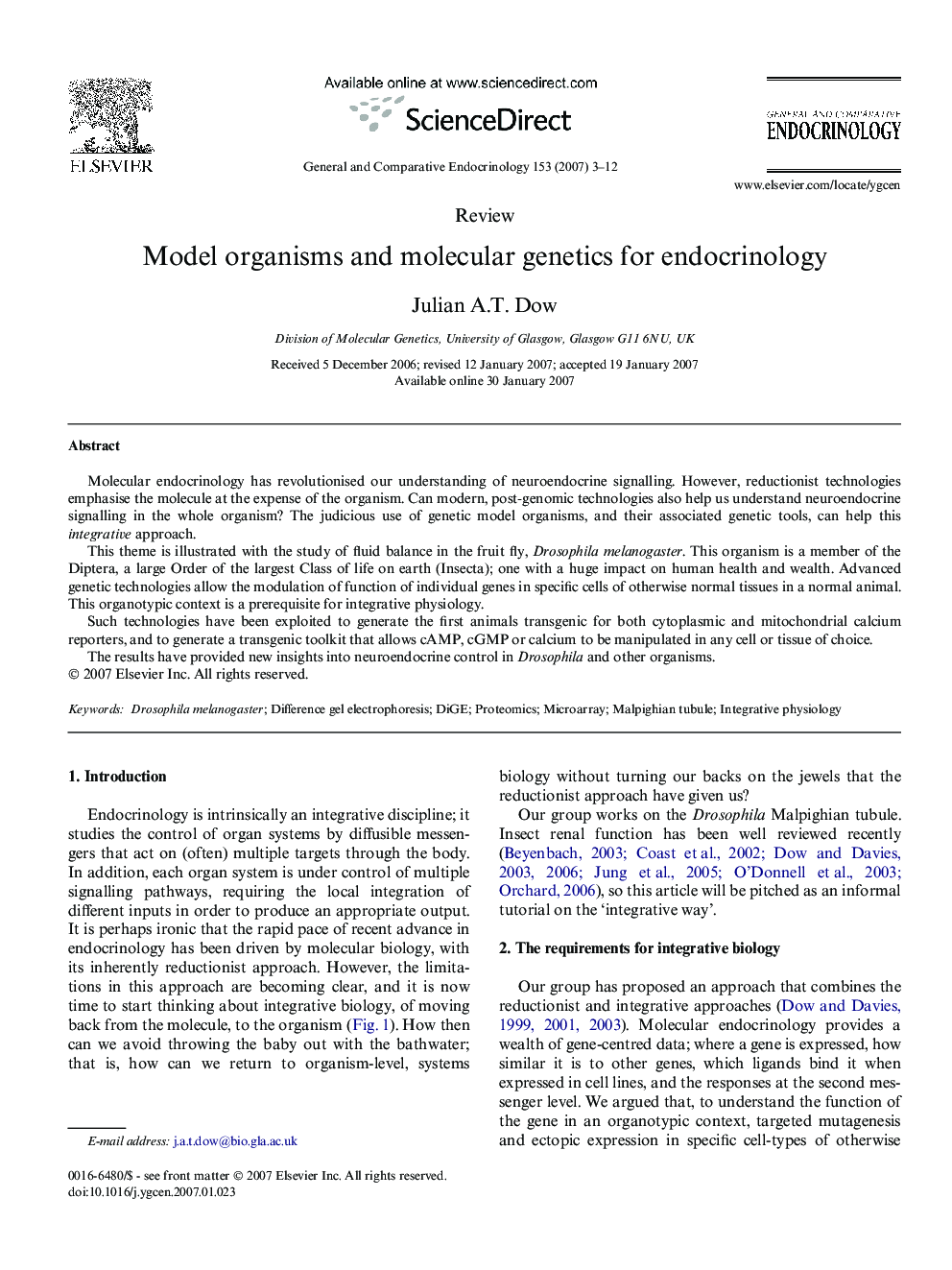| Article ID | Journal | Published Year | Pages | File Type |
|---|---|---|---|---|
| 2801746 | General and Comparative Endocrinology | 2007 | 10 Pages |
Molecular endocrinology has revolutionised our understanding of neuroendocrine signalling. However, reductionist technologies emphasise the molecule at the expense of the organism. Can modern, post-genomic technologies also help us understand neuroendocrine signalling in the whole organism? The judicious use of genetic model organisms, and their associated genetic tools, can help this integrative approach.This theme is illustrated with the study of fluid balance in the fruit fly, Drosophila melanogaster. This organism is a member of the Diptera, a large Order of the largest Class of life on earth (Insecta); one with a huge impact on human health and wealth. Advanced genetic technologies allow the modulation of function of individual genes in specific cells of otherwise normal tissues in a normal animal. This organotypic context is a prerequisite for integrative physiology.Such technologies have been exploited to generate the first animals transgenic for both cytoplasmic and mitochondrial calcium reporters, and to generate a transgenic toolkit that allows cAMP, cGMP or calcium to be manipulated in any cell or tissue of choice.The results have provided new insights into neuroendocrine control in Drosophila and other organisms.
